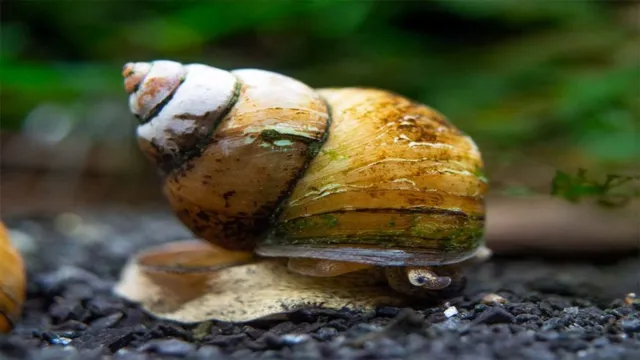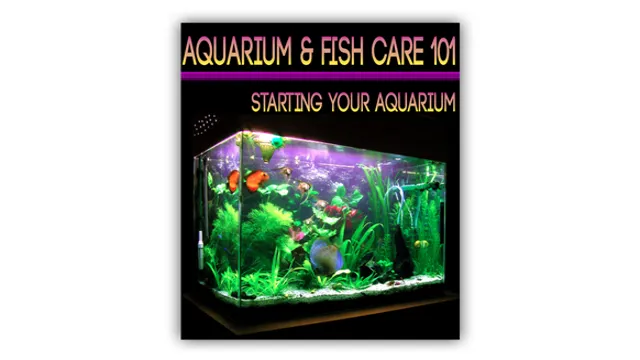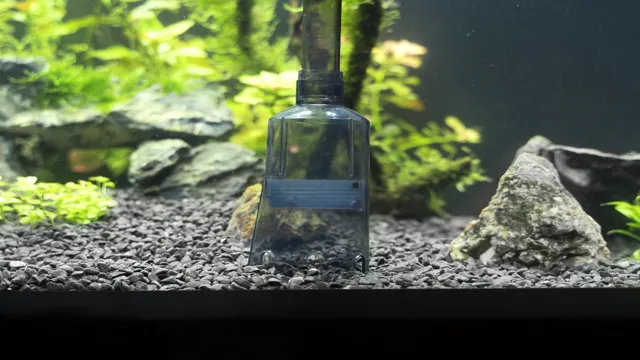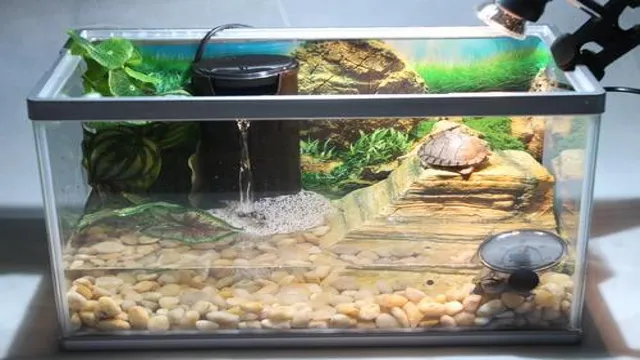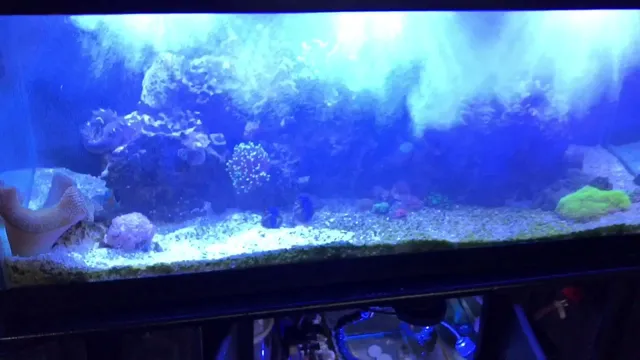Are you struggling with snails taking over your aquarium? Don’t worry, you’re not alone. Snails can be a hassle for many aquarium owners and may even harm your fish or plants. It’s essential to control their population to maintain a healthy aquarium ecosystem.
Luckily, there are several ways to do this without risking harm to your other aquatic inhabitants. In this blog, we’ll take a look at the most effective methods for controlling snail population in your aquarium. From natural predators to chemical treatments, we’ll explore everything you need to know to keep your aquarium snail-free.
So, let’s dive in and see how we can control these pesky little critters!
What are Aquarium Snails?
If you’ve got an aquarium, chances are you’ve encountered aquarium snails. These little critters can be found in most freshwater tanks and come in a variety of species. Some people love having them in their tank as they help keep algae under control and serve as a food source for other aquatic animals, while others want to keep the snail population down.
If you’re looking for ways to manage your snail population, there are a few things you can do. First, avoid overfeeding your fish as extra food can attract snails. You can also remove any visible snails manually or use snail traps to catch them.
Alternatively, adding snail-eating fish or certain snail-eating snail species can help keep the population in check. As always, it’s important to research the specific species of snail you have before attempting to remove or manage them. With some careful planning, you can control your snail population and enjoy a healthy, balanced aquarium.
Identifying Aquarium Snails
Aquarium snails are a common sight in many home aquariums. These small snails come in a variety of shapes, sizes, and colors, and can either be introduced intentionally or hitch a ride on plants or decorations. While some aquarists view snails as pests, others appreciate their ability to help maintain a balanced ecosystem by consuming excess food and algae.
Identifying aquarium snails can be tricky, as many species look similar to one another. However, paying close attention to factors such as size, shell shape and color, and behavior can help differentiate between different varieties. Snail identification can also be useful in determining whether a particular species is beneficial or harmful to your aquarium.
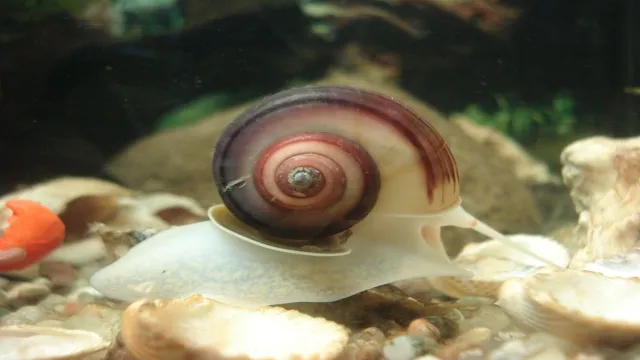
Common Types of Aquarium Snails
Aquarium snails are a common addition to many fish tanks and can provide a variety of benefits, such as helping to control algae growth and providing an interesting element to the overall ecosystem. There are several types of aquarium snails available, each with its own unique characteristics and suitability for different tank setups. One popular variety is the mystery snail, which ranges in color from blue to gold and is known for its peaceful demeanor.
Apple snails are also a common choice, with their larger size and bright coloring making them easy to spot in a tank. Ramshorn snails are another option, and they are often used as a food source for larger fish due to their small size and abundance. Regardless of the type of snail, it’s important to research their specific care requirements and take steps to prevent overpopulation in the tank.
With proper management, aquarium snails can be a beautiful and beneficial addition to any underwater habitat.
How do Aquarium Snails Reproduce?
If you’re noticing a rapid increase in the snail population in your aquarium, it’s important to understand how they reproduce in order to keep their numbers under control. Aquarium snails have both male and female reproductive organs and are capable of self-fertilization, meaning they can reproduce without a partner. They lay eggs in small clusters which can hatch in as little as two weeks.
To keep the snail population down, it’s important to remove any visible eggs or snails from the tank as soon as possible. Additionally, introducing a snail-eating fish or regularly cleaning the tank can help control their numbers. By understanding the reproductive habits of aquarium snails and taking proactive measures, you can maintain a healthy balance in your tank.
Factors That Influence Snail Reproduction
Aquarium Snail Reproduction If you own an aquarium, you’re probably aware that snails are common inhabitants. These slimy creatures can reproduce quite quickly, much to the surprise of many aquarium owners. Snail reproduction is influenced by a number of factors such as water temperature, food availability, and lighting.
When conditions are favorable, snails release eggs that hatch into tiny creatures that look exactly like miniature adult snails. These creatures can reproduce at just a few weeks old, which is why controlling snail populations in aquariums can be challenging. Some species, like nerite snails, need both male and female snails to reproduce, while others can lay eggs without a partner. (See Also: How to Do a Water Change in a Saltwater Aquarium: Step-by-Step Guide)
Keeping a close eye on the snail population in your aquarium is crucial to maintaining a healthy ecosystem, but with the right conditions, snail reproduction can be a fascinating and rewarding experience.
Understanding Snail Eggs
Aquarium snails are fascinating creatures that reproduce by laying eggs. The process can seem confusing for some aquarium owners, as they may be unsure how to identify the eggs and what to expect from the hatching process. Snail eggs typically look like small, translucent blobs or clusters that can be found on various surfaces inside the aquarium.
Depending on the species of snail, the eggs may be laid above the waterline or below it. Once the eggs are laid, they can take anywhere from a few days to several weeks to hatch. During this time, it’s important to keep them safe from predators and ensure that the water quality in the aquarium is appropriate for the species.
Once the baby snails hatch, they will either be free-swimming or attached to a surface, depending on the species. Overall, understanding the process of snail reproduction can be an interesting and rewarding aspect of aquarium ownership.
Hatching of Snail Eggs
Aquarium snails may not be the most exciting creatures in your tank, but they play a vital role in the ecosystem. It’s fascinating to watch their behaviour and learn about their reproduction process. These snails are hermaphrodites, meaning they have both male and female reproductive organs.
When they’re ready to reproduce, they engage in a mating ritual that involves exchanging sperm with another snail. Once fertilized, the snail lays eggs that appear as tiny dots attached to surfaces like plants, glass, or rocks. The eggs hatch within 2 to 4 weeks, and tiny snails emerge.
These adorable, miniature snails are fully formed and can start feeding on algae and other plant material immediately. In captivity, it’s easy to miss the egg-laying process because the eggs are so small, but it’s a fascinating sight to see the newborn snails crawling around the aquarium.
Why Should You Control Snail Population?
If you own an aquarium, controlling snail population is an essential aspect to maintain the overall health of your aquatic environment. Although snails can be beneficial in some ways, excessive snail populations can create problems like overpopulation, reduced water quality, and increased competition for resources. One way to keep snail population down in the aquarium is to limit their food source.
Overfeeding your fishes leads to an abundance of food residues, which snails thrive on. Another way is by adding snail-eating creatures like loaches or assassin snails, that can naturally manage the snail population. If the snail population does get out of hand, there are chemical treatments to eradicate them; however, it is important to research the chemicals before using them to prevent harm to the other aquatic organisms.
By controlling the snail population, you can enhance the overall health and beauty of your aquarium.
Negative Effects of Snail Overpopulation
Snail overpopulation can have negative effects on both humans and ecosystems. These creatures reproduce quickly, and if left unchecked, their numbers can skyrocket, leading to a multitude of problems. For one, snails can be a nuisance to gardeners and farmers, as they eat through crops and flowers, leading to financial loss.
Additionally, snails are known to carry parasites that can pose a risk to human health. Furthermore, overpopulated snail communities can disrupt ecosystems by consuming large amounts of vegetation, which can throw off the balance of the food chain. It’s important to control snail populations to prevent these negative effects from occurring, and practicing eco-friendly methods that do not harm the environment is essential in doing so.
With proper management, snail populations can remain healthy and balanced, protecting both humans and ecosystems from potential harm.
Possible Solutions to Snail Infestation
When it comes to controlling snail populations, there are a few reasons why it’s important to take action. Firstly, snails can cause significant damage to gardens, crops, and other plants. They are known for feasting on plant leaves, stems, and flowers, which can ultimately lead to stunted growth or even death if left unchecked. (See Also: How to Make a Coral Reef Aquarium in a 10 Gallon Tank: A Comprehensive Guide)
Additionally, certain species of snails can carry harmful parasites and bacteria that can impact human health if ingested. Finally, snails reproduce quickly and can quickly become a larger infestation if steps aren’t taken to control their numbers. To combat this, there are a few possible solutions including natural remedies, barrier methods, and the use of certain pesticides.
By taking action to control snail populations, gardeners and homeowners can help protect their plants and keep their families safe from potential health concerns.
How to Keep Snail Population Down?
Are you tired of seeing snails overrun your aquarium? There are several ways to keep their population under control. Firstly, overfeeding your fish can result in excess food for the snails to feed on. Be sure to only feed your fish the appropriate amount, and remove any excess food after feeding.
Secondly, you can manually remove the snails using a net or simply picking them out by hand. If you prefer a more natural solution, consider adding fish or other creatures that feed on snails, such as loaches or assassin snails. Lastly, you can use chemical treatments, such as copper-based medications, to kill off snails.
However, be cautious when using these treatments as they can harm other inhabitants of the aquarium. By implementing some of these methods, you can successfully keep snail populations under control and maintain a healthy and balanced aquarium environment.
Methods of Snail Population Control
Snail Population Control Snails may seem harmless, but they can quickly become a nuisance if their population goes unchecked. Luckily, there are several ways to help control the number of snails in your garden or backyard. One effective method is to attract natural predators that will feed on the snails, such as birds, frogs, and toads.
You can also try setting up barriers or using snail-repelling products to keep them away from your plants. Another option is to manually remove snails and their eggs from your garden, being sure to dispose of them far away from any vegetation. Additionally, reducing the amount of moisture in your garden can help deter snails, as they prefer damp environments.
By implementing these strategies, you can help keep the snail population low and protect your plants from damage.
Preventive Measures to Avoid Snail Infestation
Preventive Measures to Keep the Snail Population Under Control Snails may look harmless, but they can quickly become a nuisance in your garden or backyard if their population is not kept under control. Thankfully, there are several preventive measures you can take to avoid snail infestation. Firstly, you should remove any debris or clutter in your garden as they provide hiding spots for snails.
Additionally, you can create barriers around your plants using copper tape, crushed eggshells, or diatomaceous earth to deter snails from attacking them. Another effective method is to use natural predators of snails such as ducks, chickens, or even some species of beetles to keep their population in check. You can also try using traps, such as beer traps, to lure and drown snails.
Lastly, you can manually remove snails from your garden or use organic snail bait made from iron phosphate. By taking these preventive measures, you can keep the snail population under control and protect your crops and plants from damage caused by these slimy creatures.
Natural Ways to Get Rid of Snails in Your Aquarium
Aquarium snails can look pretty cute in the beginning, but they can quickly turn into a population explosion that overwhelms your tank. Unfortunately, chemical treatments can be harmful to your other aquatic life and may not even be effective in the long run. So, what are some natural ways to keep snail populations in check? One option is to introduce snail-eating fish like loaches or puffers into your tank.
Another solution is to reduce the amount of excess food or detritus in the tank, as snails often feed on these waste products. Additionally, manually removing snails can help prevent their numbers from growing. A simple trick for this is to place a lettuce leaf in the tank overnight, and then remove it in the morning when it is covered in snails.
By using these natural methods, you can effectively control the snail population in your aquarium without risking harm to your other aquatic life. (See Also: How to Care for Seahorses in an Aquarium: A Comprehensive Guide for Beginners and Experts Alike)
Final thoughts
Overall, keeping the snail population down in your aquarium can be a bit of a challenge, as snails tend to reproduce fairly quickly and easily. However, there are a few steps you can take to help control their numbers. Firstly, regularly performing water changes and gravel vacuuming can help remove any excess food or debris that snails tend to feed on, which can reduce their population growth.
Additionally, introducing fish or other animals that prey on snails (such as loaches or pufferfish) can also be an effective method of keeping their numbers in check. Lastly, considering the types of plants and decorations in your aquarium can also play a role- some snails are more attracted to certain types of vegetation, so removing these could potentially help reduce their numbers. By combining these methods and staying vigilant, you can help keep your aquarium’s snail population under control.
Conclusion
In summary, keeping a snail population under control in your aquarium requires a combination of diligent maintenance and strategic prevention. Removing excess food and debris, adding natural predators like assassin snails or loaches, and being cautious when introducing new plants or livestock can all contribute to a healthy and balanced aquatic environment. However, if all else fails, you could always try hiring a snail whisperer or investing in a miniature snail-sized treadmill to keep those ornery mollusks in check.
Happy fishkeeping!”
FAQs
What causes a snail infestation in an aquarium?
Snails can be introduced to an aquarium through live plants, rocks, and even other fish. They are notorious for reproducing quickly, leading to an infestation.
What are some natural ways to control snail populations in an aquarium?
Adding snail-eating fish, such as loaches or puffers, can help to control snail populations naturally. Additionally, manually removing snails and their egg clutches can help to slow their reproductive rate.
Can chemicals be used to control snail populations?
While chemicals and snail-killing treatments are available, they can also harm other inhabitants of the aquarium. It is best to explore natural methods before resorting to chemicals.
What types of live plants are most likely to introduce snails into an aquarium?
Plants that are sold with snails clinging to them, such as Java Moss or Water Wisteria, are most likely to introduce snails into an aquarium. It is important to quarantine plants before adding them to an established aquarium.
How often should snail removal be performed in an aquarium?
Regular snail removal is necessary to keep populations in check. This can be done weekly, bi-weekly, or monthly depending on the severity of the infestation.
Can snails be used as a food source for other aquarium inhabitants?
Yes, snails can be fed to carnivorous fish such as bettas or cichlids. They can also be used as food for some species of turtles and frogs.
Is it possible to eliminate snails from an aquarium completely?
While it is unlikely to completely eliminate snails from an aquarium, their population can be controlled through natural methods and regular removal. It is important to stay vigilant to prevent a severe infestation from occurring.

